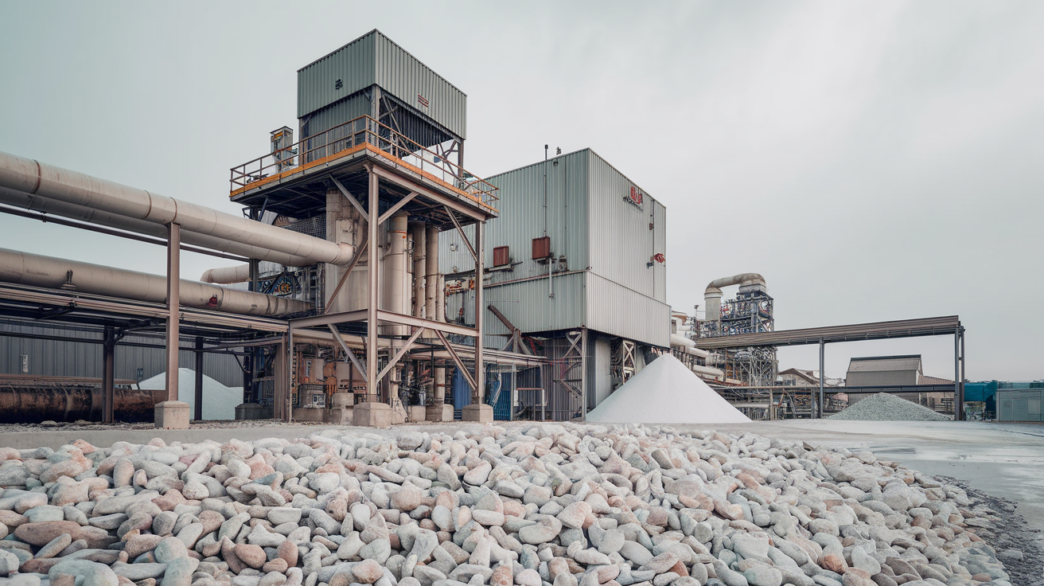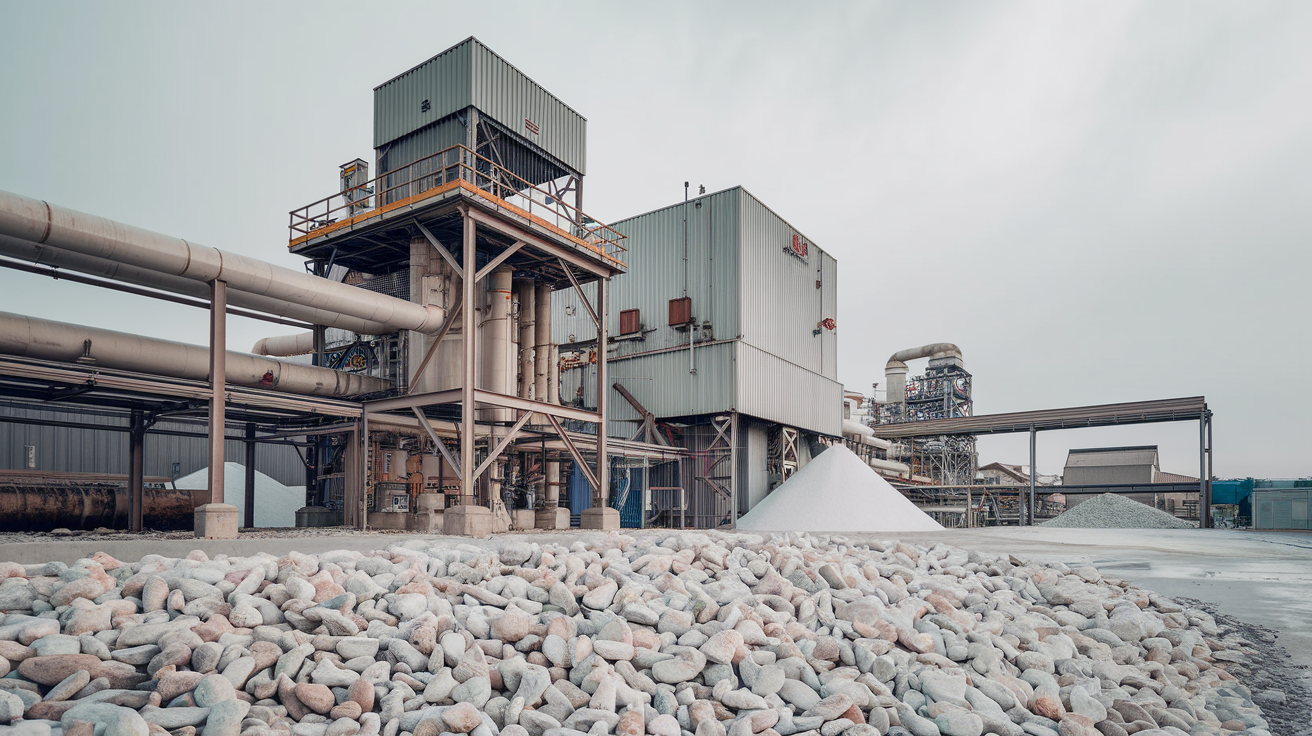Table of Contents Show
Silica, also known as silicon dioxide (SiO2), is one of the most abundant compounds on Earth. This versatile material has been a cornerstone of human civilization for millennia, playing crucial roles in industries ranging from construction to cutting-edge technology. As we stand on the brink of new technological frontiers, silica continues to be an indispensable resource, shaping our world in ways both visible and invisible.
Historical Uses of Silica
Silica’s journey with humanity began in prehistoric times. Early humans used naturally occurring forms of silica, such as flint, to create tools and weapons. As civilizations advanced, the discovery of glassmaking—a process centered around silica—revolutionized human life. The Romans, in particular, mastered the art of glassmaking, using it for windows, containers, and decorative items.
In the industrial age, silica found new purposes. Its heat-resistant properties made it invaluable in the production of refractory materials for furnaces and kilns. The development of ceramics further expanded silica’s applications, leading to advancements in pottery, porcelain, and industrial ceramics.
Modern Applications
Today, silica’s applications have expanded far beyond its historical uses, penetrating nearly every aspect of modern life:
- Electronics and Semiconductor Industry: High-purity silica is the foundation of silicon wafers, the building blocks of computer chips. This application has driven the digital revolution, enabling the creation of increasingly powerful and compact electronic devices.
- Solar Panels: Silica is a key component in the production of solar cells. As the world shifts towards renewable energy, the demand for high-grade silica in this sector continues to grow.
- Construction Materials: Silica remains crucial in construction, not just in traditional materials like concrete and glass, but also in advanced materials such as aerogels for insulation.
- Healthcare and Cosmetics: Silica gel is used in pharmaceuticals as a desiccant and anticaking agent. In cosmetics, silica appears in everything from toothpaste to makeup, providing texture and absorbent properties.
Changes in the Silica Industry
The silica industry has undergone significant transformations in recent decades:
- Technological Advancements: Improved processing techniques have allowed for the production of higher purity silica, crucial for applications in electronics and solar energy.
- Shift Towards Higher Purity Grades: The demand for ultra-pure silica has skyrocketed, driven by the needs of the semiconductor and solar industries.
- Emerging Markets: Developing economies, particularly in Asia, have become major consumers of silica, reshaping global supply chains and market dynamics.
Environmental Concerns
While silica is natural and generally inert, its extraction and processing raise several environmental concerns:
- Silica Dust: Occupational exposure to respirable crystalline silica can lead to silicosis, a serious lung disease. This has led to stricter regulations in mining and processing operations.
- Ecosystem Impact: Open-pit mining for silica can disrupt local ecosystems and biodiversity. Efforts are being made to minimize these impacts through responsible mining practices.
- Water Usage: Processing silica, especially for high-purity applications, requires significant amounts of water. In water-stressed regions, this can lead to conflicts with other water needs.
Mining Practices
The silica mining industry has evolved to address environmental and health concerns:
- Traditional Extraction: Open-pit mining remains the most common method for extracting silica sand. However, modern operations employ dust suppression techniques and more efficient extraction methods.
- Sustainable Mining Techniques: Some companies are exploring underground mining methods to reduce surface disturbance. Others are investigating the potential of recycling glass and other silica-rich waste materials.
- Reclamation Efforts: Many jurisdictions now require comprehensive plans for land reclamation after mining operations cease. This includes reshaping the land, replanting native vegetation, and sometimes creating wetlands or recreational areas.
Players in the Silica Industry
Homerun Resources (TSXV: HMR | OTC: HMRFF)
Homerun Resources is focused on developing high-purity silica and silicon projects. Some key points about the company:
- Operates the Tate Dome high-purity silica project in Wyoming, USA
- Recently acquired the Taranis high-purity silica project in British Columbia, Canada
- Aiming to supply silica for solar panels, semiconductors, and other high-tech applications
- Market cap of approximately CA$89.63 million as of September 2024
HPQ Silicon (TSXV: HPQ | OTC: HPQFF)
HPQ Silicon is developing innovative silicon solutions. Key aspects include:
- Developing proprietary PUREVAP technology to produce high-purity silicon
- Focused on applications in batteries, hydrogen production, and 3D printing
- Partnerships with PyroGenesis Canada for technology development
- Market cap of around CA$124 million
Quebec Innovative Materials Corp. (CSE: QIMC)
Quebec Innovative Materials is exploring silica and hydrogen properties in Canada:
- Flagship Charlevoix Silica Project in Quebec
- Also exploring hydrogen potential in its properties
- Relatively new entrant, having gone public in 2023
- Market cap of approximately CA$32 million
Future Outlook for Silica
Looking ahead to the next year and beyond, the silica industry faces both challenges and opportunities:
- Market Projections: The global silica market is expected to continue growing, driven by increasing demand in the electronics, solar, and construction sectors. However, economic uncertainties and potential supply chain disruptions could impact short-term growth.
- Emerging Technologies: Research into silica aerogels and other advanced materials promises new applications in fields such as aerospace and energy storage. The development of more efficient solar cells may also drive demand for high-purity silica.
- Sustainability Challenges: The industry will need to address growing concerns about the environmental impact of silica mining and processing. This may lead to increased investment in recycling technologies and more sustainable extraction methods.
- Regulatory Environment: Stricter regulations around silica dust exposure and environmental protection are likely to continue shaping the industry, potentially increasing operational costs but also driving innovation.
Silica, a material as old as the Earth itself, continues to play a vital role in shaping our modern world. From the silicon chips powering our digital devices to the glass in our windows and the cells in our solar panels, silica remains an indispensable resource. As we look to the future, the silica industry stands at a crossroads, balancing the increasing demand for this versatile material with the need for sustainable and responsible practices. The coming years will likely see continued innovation in both the applications of silica and the methods used to produce it, ensuring that this ancient material remains at the forefront of technological progress.












